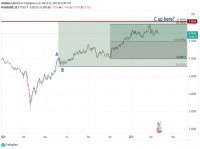|
Opalesque Industry Update: In a decision handed down on December 12, 2012, the United States District Court for the District of Columbia turned aside a challenge that the Investment Company Institute and the U.S. Chamber of Commerce had brought to new rule and rule amendments affecting registered funds adopted by the Commodity Futures Trading Commission (“CFTC”) (collectively, “Regulations”).1 The plaintiffs challenged amendments to CFTC Regulation 4.5 that impose portfolio limits on firms seeking to rely on the exclusion from commodity pool operator (“CPO”) status for registered funds. The case also challenged application of CFTC Regulation 4.27 to registered funds, which imposes a comprehensive set of reporting requirements on registered CPOs. The plaintiffs asserted that the Regulations failed to satisfy certain procedural requirements applicable to the agency under the Commodity Exchange Act (“CEA”) and the Administrative Procedure Act (“APA”) when it adopts rules and rule amendments. The Court found that the CFTC fulfilled its obligations under the CEA and APA to evaluate the costs and benefits of its Regulations, provided a reasoned justification for the Regulations, and gave interested persons a sufficient opportunity to participate meaningfully in the rulemaking process. Absent some last-minute relief by the CFTC, and notwithstanding the likelihood of an appeal, this decision confirms that by December 31, 2012 firms will need either to register as CPOs or to conform their activities to comply with the requirements of amended Regulation 4.5.2 Firms that must register by year-end will have additional time before they must begin complying with the substantive requirements of the Regulations and related rules of the National Futures Association (“NFA”), the self-regulatory body for CFTC-registered firms. Any firm that advises a wholly-owned subsidiary (known as a “controlled foreign corporation” or “CFC”) of a registered fund to obtain commodities exposure should be aware that such management activity may give rise to an independent CPO registration obligation. Although a firm may be entitled to rely on the Regulation 4.5 exclusion with respect to a registered fund it advises, it may not necessarily be excused from CPO registration with respect to the registered fund’s CFC. Therefore, any such firms should separately analyze under Regulation 4.13(a)(3) whether their CFCs would be required to have their CPOs register with the CFTC. This provision contains substantially similar portfolio limitations to those in Regulation 4.5, but it lacks the carve-out for bona fide hedging transactions. Background on the New Rule and Rule Amendments at Issue In February 2012, the CFTC amended Regulation 4.5 to narrow its scope, justifying this change principally by reference to the increased use of derivatives by registered funds and the connection between those instruments and the 2008 financial crisis.3 These amendments narrow the exclusion from the definition of CPO by requiring that registered funds either enter into “commodity interest” positions (e.g., commodity futures and options, security futures products, and swaps) solely for bona fide hedging purposes or represent that the required initial margin or other upfront payments for, or the aggregate net notional value of, the commodity interest positions not exceed certain thresholds. These amendments also impose a marketing restriction, providing that a registered fund cannot be marketed to the public as a vehicle for trading commodity interests.4 In the February rulemaking, the CFTC clarified that a registered fund’s investment adviser would be the entity required to register as a CPO if the fund were unable to satisfy the portfolio limits, trading restriction, and other requirements of amended Regulation 4.5.5 New Regulation 4.27 requires registered CPOs to report certain information about counterparty relationships, investments, and other matters to the CFTC and other federal regulators on new Form CPO-PQR. (The NFA requires similar reporting on its own Form PQR, and Regulation 4.27 and the NFA also require reporting from registered commodity trading advisors.) The CFTC has indicated that registered funds subject to CPO registration – i.e., with investment advisers that must register as CPOs in keeping with the agency’s position – will not be required to comply with Regulation 4.27 and other requirements under Part 4 of its regulations until 60 days after its proposal for harmonizing SEC and CFTC requirements is finalized and becomes effective (“Harmonization Proposal”).6 The CFTC has not yet announced when it will consider adopting the Harmonization Proposal. For a more complete discussion of these amendments and the new rule, please see our February Client Alert on this subject. The Court’s Opinion In its motion for summary judgment, the plaintiffs argued that the Court should vacate the CFTC’s action, by claiming that the Regulations suffered from several key procedural defects under the APA and the CEA. The arguments focused on the CFTC’s cost-benefit analysis and other procedural matters (e.g., providing meaningful opportunities for public comment). Accordingly, for purposes of its analysis the Court grouped the balance of the plaintiffs’ arguments into separate “benefit-side” and “cost-side” discussions. The Court then went on to address the other arguments individually, after noting that for most of the CFTC’s forty-year history, registered funds were subject to registration under the CEA absent the ability to comply with an applicable limit on their commodity interest trading. The Court also emphasized that its review of the CFTC’s actions was under an “arbitrary and capricious” standard, and that while such standard was narrow and the Court was not to substitute its judgment for that of the CFTC, it must determine that the CFTC “examined the relevant data and articulated a satisfactory conclusion including a rational connection between the facts found and the choice made.”7 The Court further emphasized that its role was not to second-guess the CFTC’s conclusion on the outcome of its cost-benefit analysis, but only to determine that the CFTC had considered and evaluated the costs and benefits required by statute. Review of “Benefit-Side” Arguments. Failure to Demonstrate Necessity of the Regulations. The plaintiffs argued that the CFTC violated the APA and the cost-benefit provisions of the CEA by adopting the Regulations without considering their necessity, including by not identifying a problem that needed to be fixed, and therefore not identifying the benefits to be had from the Regulations. The Court disagreed with the plaintiffs, stating that the benefits cited by the CFTC were supported by “a number of specific justifications” identified by the CFTC in adopting the Regulations, including the elimination of “informational blind spots” in the derivatives market and carrying out a “more robust mandate” after the passage of the Dodd-Frank Act “to manage systemic risk and to ensure safe trading practices by entities involved in the derivatives markets.”8 The Court further stated that it would not disturb an agency’s rulemaking as arbitrary and capricious for adopting a prophylactic rule to prevent problems. The Court noted that, while the CFTC acknowledged that it could not meaningfully quantify the systemic benefits of the rulemaking, it did explain that the purported benefits of the rulemaking were significant because the agency may use the data it collects under the Regulations “to prevent future shocks to the U.S. financial system.”9 The Court concluded that it did not need “any more exacting benefit calculation” from the CFTC, particularly where the agency was “fulfilling its expanded regulatory responsibilities under the Dodd-Frank Act.”10 Failure to Justify 2003 Rule Reversal. The plaintiffs next argued that the CFTC arbitrarily reversed its 2003 version of Regulation 4.5, which contained no limit on commodity interest trading, with no meaningful justification. In response to this argument, the Court emphasized that the CFTC need only show the Court that its Regulations were permissible under the statute, that there were good reasons for the changes made, and that the CFTC believed them to be better. The Court noted that the CFTC recognized its history of exempting registered funds from CPO registration because those entities had engaged in little derivatives trading, but that the CFTC had determined that “changed circumstances” warranted revision to the regulations. In this regard, the Court emphasized the “more robust mandate” given to the CFTC by the Dodd-Frank Act to ensure safe trading practices by entities involved in the derivatives market.11 In addition, the Court concluded that the CFTC was justified in changing its 2003 rulemaking because the Dodd-Frank Act repealed the statutory underpinnings for the 2003 version of Regulation 4.5 – namely, the exclusion of swap transactions from CFTC oversight. The Court also noted the CFTC’s observation that it had become aware of “potentially risky but unregulated CPO trading activity” by registered funds.12 Failure to Justify Overlapping Regulations. The plaintiffs also argued that the CFTC failed to show that existing regulations were inadequate when adopting the Regulations, specifically that the CFTC layered CFTC and NFA regulations on top of existing SEC regulations without comparing the protections of these regulatory regimes or demonstrating why an added layer of regulation was necessary. The Court did not find this argument persuasive, stating that the CFTC had a role to play in regulating derivatives trading outside the scope of SEC jurisdiction. For instance, the Court noted that the mandate from Congress in Dodd-Frank to incorporate swaps into the definition of CPO tended to demonstrate this point. The Court also did not find persuasive the plaintiffs’ argument that the CFTC failed to determine the extent to which registered funds would be subject to conflicting regulations among regulatory agencies, noting that the CFTC had “explicitly recognized” that certain provisions of the Regulations conflicted with those of the SEC and suspended compliance with reporting obligations under the Regulations until after the Harmonization Proposal is adopted. The Court stated that “there was nothing arbitrary and capricious about the CFTC’s decision to proceed with regulatory amendments, while assessing possibilities for harmonization of reporting requirements with another agency.”13 Failure to Justify Targeting Registered Funds. Finally, the plaintiffs argued that the CFTC failed to justify its Regulations by applying the amendments to Regulation 4.5 only to registered funds while not applying them to other entities that are able to rely on that CPO exclusion (such as insurance companies, banks, trust companies, and pension plans). The Court said that the CFTC was justified in focusing on registered funds because it was aware of increased derivatives trading by registered funds and not by the other excluded entities. Review of “Cost-Side” Arguments. Failure to Determine Costs. The plaintiffs argued that, in spite of the “significant burdens” the CFTC acknowledged may arise from the changes to Regulation 4.5, the CFTC made it impossible to determine the full extent of the associated costs, as required by law. Specifically, the plaintiffs claimed that the CFTC made it impossible to assess the costs of the Regulations by including swaps within Regulation 4.5 when the definition of “swap” had yet to be finalized, and by deciding to “regulate-first and harmonize-later” – i.e. failing to determine at the time it adopted the Regulations whether and how the problem of conflicting or overlapping regulations with the SEC would be resolved. Regarding the plaintiffs’ argument on swaps, the Court observed that Dodd-Frank provided a detailed definition of “swap.” As a result, the Court concluded that the fact that the CFTC and SEC did not finalize their interpretive rules and guidance on the “swap” definition until some months later did not make inclusion of that term in Regulation 4.5 arbitrary and capricious. The CFTC requested that the Court dismiss the second claim – regulate-first and harmonize-later – as unripe. The Court granted the request for dismissal, finding among other things that there would be no hardship given the CFTC’s suspension of compliance requirements until it has finalized the Harmonization Proposal. Burdening Already Heavily Regulated Registered Funds. In concluding its “cost-side” analysis, the Court addressed what it called the plaintiffs’ “broader argument” that the requirements of the Regulations were too burdensome, specifically that the requirements of the Regulations would place significant burdens on registered funds that were already “among the most comprehensively regulated entities in the U.S. financial system.”14 The Court stated that the concerns about additional regulatory burdens were insufficient to vacate rules “targeted to obtain information considered vital to the protection of the financial markets.”15 The Court further noted that while registered funds would incur new costs as they comply with the Regulations, “these burdens are relatively minor for entities that are already heavily regulated.”16 The Court concluded by stating that, under the CEA, the CFTC “is not required to promulgate only rules that have low or no costs;” rather it is only required to show that it considered and evaluated the costs of the rule.17 Review of Other Arguments. Failure to Provide Reasoned Justification for Significant Aspects of the Regulations. In addition to claims related to the costs and benefits of the Regulations, the plaintiffs argued that the CFTC failed to provide reasoned justification for significant aspects of the Regulations, as described more fully below. The plaintiffs argued that the CFTC imposed new filing obligations on registered funds and their advisers under Regulation 4.27 without considering whether these obligations were necessary. The Court determined that the CFTC justified its imposition of the Regulation 4.27 reporting requirements for the same reasons it found that Regulation 4.5 was justified, to shed light on the informational “blind spots” in the financial markets, and therefore the adoption of Regulation 4.27 was not arbitrary and capricious. In addition, the plaintiffs argued that the CFTC provided an illogical and inadequate explanation for its decision to include swaps within Regulation 4.5’s trading limits. The plaintiffs argued that while Dodd-Frank had expanded the CFTC’s jurisdiction to include swaps and the statutory definition of CPO to include entities that trade in swaps, the CFTC was not required to include swaps in the calculation of whether a registered fund met the trading limits, and that doing so was “unnecessary and premature” because the CFTC was currently engaged in swap rulemaking. The Court disagreed, stating that, given the express congressional intent for the CFTC to exert regulatory authority over swaps trading, the CFTC “would have ignored a significant purpose of Dodd-Frank and defied Congress by failing to expand the CPO definition to cover entities trading swaps. . . .”18 The plaintiffs argued that the CFTC arbitrarily adopted a narrow definition of bona fide hedging, which limited the CPO exclusion to transactions designed to offset exposure in the physical commodity markets only. The CFTC responded that it was not obligated to offer any exception to the portfolio limits, and that it would be difficult to objectively define other risk mitigation strategies. The Court stated that it saw no reason to disturb the CFTC’s decision to offer such an exception.19 Finally, the plaintiffs argued that the CFTC failed to offer a reasoned explanation for its decision to set the portfolio limit on initial margin and other upfront payments at five percent of a fund’s liquidation value, when the CFTC explained in 2003 that the five percent threshold had come to limit the activities of registered funds to a greater extent than originally intended. The Court disagreed with the plaintiffs, noting that the record indicated that the CFTC had adopted the NFA’s recommendation that it return to pre-2003 operating criteria, which included the five percent threshold. The Court noted that the plaintiffs, while arguing that the threshold was too strict, did not offer evidence to contradict the CFTC’s reasoning. Therefore, the Court concluded that, without conflicting data and with the “well-reasoned” recommendation of the NFA, it was not arbitrary and capricious for the CFTC to re-impose the five percent threshold it had applied for nearly 20 years prior to 2003. The Court also noted that the CFTC provided an alternative aggregate net notional value limit in Regulation 4.5 to address concerns that the five percent threshold might be too restrictive in some cases. Violation of the CEA. In addition to the claims brought under the APA, the plaintiffs argued that the CFTC did not fulfill its obligations under Section 15(a) of the CEA to consider and evaluate the costs and benefits of the Regulations. The Court noted that, under Section 15(a), the CFTC was obligated to consider the costs and benefits of proposed actions. The Court confirmed that the CFTC’s action satisfied each of the requirements specified in Section 15(a).20 Failure to Provide a Meaningful Opportunity to Comment. The Court addressed the plaintiffs’ argument that the CFTC violated the APA because it did not provide interested persons an opportunity to participate in the rulemaking. Specifically, the plaintiffs argued that the CFTC identified seven new factors to be applied to the marketing restriction in Regulation 4.5 in the final rulemaking that were not applied in the initial rule proposal, thereby not giving interested persons notice or the opportunity to comment. The Court disagreed, stating that the CFTC had added the seven factors in response to a comment for clarification about the marketing restriction and that such response was a “logical outgrowth” of the proposed rulemaking that did not require notice and comment. Conclusion. As discussed above, absent other relief, firms will need to register as CPOs or conform their investment activities to comply with the requirements of amended Regulation 4.5 by December 31, 2012. CPOs of registered funds will not be required to comply with the reporting requirements of Regulation 4.27 or other requirements in Part 4 of the CFTC’s regulations until the agency adopts the Harmonization Proposal in its final form. Firms that advise CFCs may also need to undertake separate analyses to determine if, notwithstanding any exclusion available to the registered fund parent, they have an independent CPO registration obligation as a result of the CFC’s investment in CFTC-regulated commodity interests. Of course, there may be ways in which CFCs are able to gain commodities exposure without trading CFTC-regulated commodity interests. Press Release BM
|
Industry Updates
Federal court upholds CFTC registration and reporting rules for registered funds
Friday, December 21, 2012
|
|





 RSS
RSS







